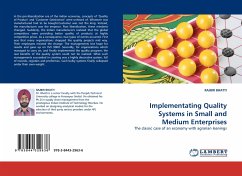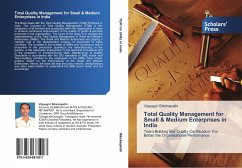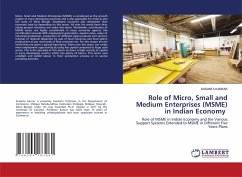
Implementating Quality Systems in Small and Medium Enterprises
The classic case of an economy with agrarian leanings
Versandkostenfrei!
Versandfertig in 6-10 Tagen
32,99 €
inkl. MwSt.

PAYBACK Punkte
16 °P sammeln!
In the pre-liberalization era of the Indian economy, concepts of Quality of Product' and Customer Satisfaction' were unheard of. Whatever was manufactured had to be bought.Customer was not the king. Instead, the manufacturer was the emperor. Post liberalization, these mindsets changed. Suddenly, the Indian manufacturers realized that the global competitors were providing better quality of products at highly competitive prices. As a consequence, two types of events occurred. First was that many organizations dropped the quality projects mid way. Their employees resisted the change. The manageme...
In the pre-liberalization era of the Indian economy, concepts of Quality of Product' and Customer Satisfaction' were unheard of. Whatever was manufactured had to be bought.Customer was not the king. Instead, the manufacturer was the emperor. Post liberalization, these mindsets changed. Suddenly, the Indian manufacturers realized that the global competitors were providing better quality of products at highly competitive prices. As a consequence, two types of events occurred. First was that many organizations dropped the quality projects mid way. Their employees resisted the change. The managements lost hope for results and gave up on ISO 9000. Secondly, for organizations which managed to carry on, and finally implemented the quality program; the real benefits of the quality system could not be realized. What such managements succeeded in creating was a highly decorative system, full of records, registers and proformas. Such bulky systems finally collapsed under their own weight.












